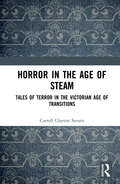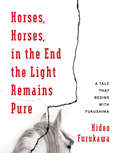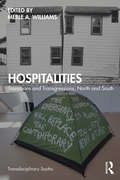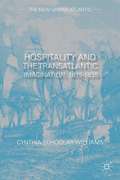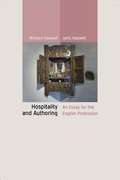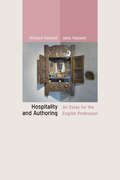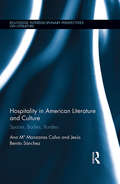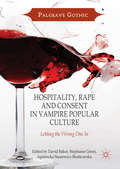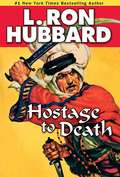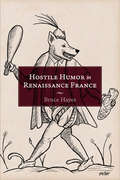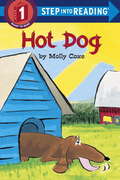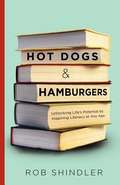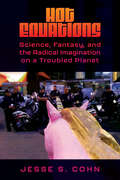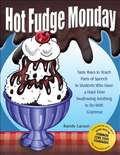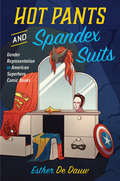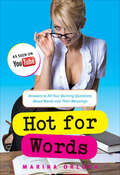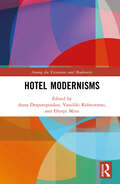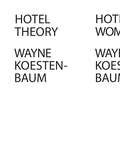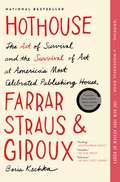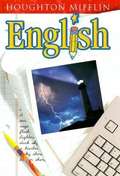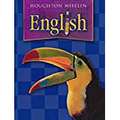- Table View
- List View
Horror in Architecture: The Reanimated Edition
by Joshua Comaroff Ong Ker-ShingA new edition of this extensive visual analysis of horror tropes and their architectural analogues Horror in Architecture presents an unflinching look at how horror genre tropes manifest in the built environment. Spanning the realms of art, design, literature, and film, this newly revised and expanded edition compiles examples from all areas of popular culture to form a visual anthology of the architectural uncanny. Rooted in the Romantic and Gothic treatment of horror as a serious aesthetic category, Horror in Architecture establishes incisive links between contemporary horror media and its parallel traits found in various architectural designs. Through chapters dedicated to distorted and monstrous buildings, abandoned spaces, extremes of scale, and other structural peculiarities, and featuring new essays on insurgent natures, blobs, and architectural puppets, this volume brings together diverse architectural anomalies and shows how their unsettling effects deepen our fascination with the unreal. Intended for both horror fans and students of visual culture, Horror in Architecture turns a unique lens on the relationship between the human body and the artificial landscapes it inhabits. Extensively illustrated with photographs, film stills, and diagrams, this book retrieves horror from the cultural fringes and demonstrates how its attributes permeate the modern condition and the material world.
Horror in the Age of Steam: Tales of Terror in the Victorian Age of Transitions
by Carroll Clayton SavantChange is terrifying, and rapid change, within a small amount of time, is destabilizing to any culture. England, under the tutelage of Queen Victoria, witnessed precipitous change the likes of which it had not encountered in generations. Wholesale swaths of the economy and the social structure underwent complete recalibration, through the hands of economic progress, industrial innovation, scientific discovery, and social cohesiveness. Faced with such change, Britons had to redefine the concept of work, belief, and even what it meant to be English. Victorians relied on many methods to attempt to release the steam from the anxieties incurred through change, and one of those methods was the horror story of everyday existence during an age of transition. This book is a study of how authors Elizabeth Gaskell, Emily Brontë, and Anne Brontë turned to horrifying representations of everyday reality to illustrate the psychological-traumatic terrors of an age of transition
Horses, Horses, in the End the Light Remains Pure: A Tale That Begins with Fukushima (Weatherhead Books on Asia)
by Hideo Furukawa"As we passed from the city center into the Fukushima suburbs I surveyed the landscape for surgical face masks. I wanted to see in what ratios people were wearing such masks. I was trying to determine, consciously and unconsciously, what people do in response. So, among people walking along the roadway, and people on motorbikes, I saw no one with masks. Even among the official crossing guards outfitted with yellow flags and banners, none. All showed bright and calm. What was I hoping for exactly? The guilty conscience again. But then it was time for school to start. We began to see groups of kids on their way to school. They were wearing masks."Horses, Horses, in the End the Light Remains Pure is a multifaceted literary response to the earthquake, tsunami, and nuclear meltdown that devastated northeast Japan on March 11, 2011. The novel is narrated by Hideo Furukawa, who travels back to his childhood home near Fukushima after 3/11 to reconnect with a place that is now doubly alien. His ruminations conjure the region's storied past, particularly its thousand-year history of horses, humans, and the struggle with a rugged terrain. Standing in the morning light, these horses also tell their stories, heightening the sense of liberation, chaos, and loss that accompanies Furukawa's rich recollections. A fusion of fiction, history, and memoir, this book plays with form and feeling in ways reminiscent of Vladimir Nabokov's Speak, Memory and W. G. Sebald's The Rings of Saturn yet draws its own, unforgettable portrait of personal and cultural dislocation.
Hospitalities: Transitions and Transgressions, North and South
by Merle A. WilliamsThis collection of imaginative essays traces notions of hospitality across a sequence of theoretical permutations, not only as an urgent challenge for our conflicted present, but also as foundational for ethics and resonant within the play of language. The plural form of the title highlights the inter-implication of hospitality with its exclusive others, holding suspicious rejection in tension with the receptiveness that transforms socio-cultural relations. Geographically, the collection traverses the globe from Australia and Africa to Britain, Europe and the United States, weaving exchanges from south to north, as well as south to south, and thoughtfully remapping our world. Temporally, the chapters range from the primordial hospitality offered by the earth, through the Middle Ages, to contemporary detention centres and the crisis of homelessness. Thematically, hospitality embraces sites of dwelling and the land, humans and animals in their complex embodiment, spectres and the dead, dolls and art objects.This text openly welcomes the reader to participate in shaping fresh critical discourses of the hospitable, whether in literary and linguistic studies, art and architecture, philosophy or politics.
Hospitality And The Transatlantic Imagination, 1815–1835
by Cynthia Schoolar WilliamsHospitality and the Transatlantic Imagination, 1815-1835 argues that a select group of late-Romantic English and American writers disrupted national tropes by reclaiming their countries' shared historical identification with hospitality. In doing so, they reimagined the spaces of encounter: the city, the coast of England, and the Atlantic itself.
Hospitality and Authoring
by Janis Haswell Richard HaswellHospitality and Authoring, a sequel to the Haswells' 2010 volume Authoring, attempts to open the path for hospitality practice in the classroom, making a strong argument for educational use and offering an initial map of the territory for teachers and authors.Hospitality is a social and ethical relationship not only between host and guest but also between writer and reader or teacher and student. Hospitality initiates, maintains, and completes acts of authoring. This extended essay explores the ways that a true hospitable classroom community can be transformed through assigned reading, one-on-one conferencing, interpretation, syllabus, reading journals, topic choice, literacy narrative, writing centers, program administration, teacher training, and many other passing habitations.Hospitality and Authoring strives to offer a few possibilities of change to help make college an institution where singular students and singular teachers create a room to learn with room to learn.
Hospitality and Authoring: An Essay for the English Profession
by Janis Haswell Richard HaswellHospitality and Authoring, a sequel to the Haswells’ 2010 volume Authoring, attempts to open the path for hospitality practice in the classroom, making a strong argument for educational use and offering an initial map of the territory for teachers and authors. Hospitality is a social and ethical relationship not only between host and guest but also between writer and reader or teacher and student. Hospitality initiates, maintains, and completes acts of authoring. This extended essay explores the ways that a true hospitable classroom community can be transformed through assigned reading, one-on-one conferencing, interpretation, syllabus, reading journals, topic choice, literacy narrative, writing centers, program administration, teacher training, and many other passing habitations. Hospitality and Authoring strives to offer a few possibilities of change to help make college an institution where singular students and singular teachers create a room to learn with room to learn.
Hospitality in American Literature and Culture: Spaces, Bodies, Borders (Routledge Transnational Perspectives on American Literature)
by Ana Maria Manzanas Calvo Jesús Benito SanchezThis volume examines hospitality in American immigrant literature and culture, situating this ancient virtue at the crossroads of space and border theory, and exploring the relationship among the intersecting themes of migration, citizenship, identity formation, and spatiality. Assessing the conditions, duration, and shifting roles of hosts and guests in the United States, the book concentrates on the ways the US administers protocols of belonging and non-belonging, and distinguishes between those who can feel at home from those who will always be outside the body politic, even if they were the original "hosts." The volume opens with a genealogy of hospitality through a focus on its sites, from its origins in the Bible, to its national and post-national renditions in contemporary American literature and culture. The authors explore recent representations of immigrant spatiality, from the space of the body in Spielberg’s The Terminal and Frears’s Dirty Pretty Things, to the different ways in which immigrants are incorporated into the United States in Alex Rivera’s Sleep Dealer, Karen T. Yamashita’s I Hotel, Junot Díaz’s "Invierno," and Ernesto Quiñonez’s Chango’s Fire, concluding with the spectrality of the immigrant body in George Saunders’ "The Semplica Girl Diaries." Timely and imperative in light of the legacies of colonialism, and the realities of modern-day globalization, this book will be of value to specialists in post-colonialism; American Studies; immigration, diaspora, and border studies; and critical race and gender studies for its innovative approaches to media and literary texts.
Hospitality, Rape and Consent in Vampire Popular Culture
by David Baker Stephanie Green Agnieszka Stasiewicz-BieńkowskaThis unique study explores the vampire as host and guest, captor and hostage: a perfect lover and force of seductive predation. From Dracula and Carmilla, to True Blood and The Originals, the figure of the vampire embodies taboos and desires about hospitality, rape and consent. The first section welcomes the reader into ominous spaces of home, examining the vampire through concepts of hospitality and power, the metaphor of threshold, and the blurred boundaries between visitation, invasion and confinement. Section two reflects upon the historical development of vampire narratives and the monster as oppressed, alienated Other. Section three discusses cultural anxieties of youth, (im)maturity, childhood agency, abuse and the age of consent. The final section addresses vampire as intimate partner, mapping boundaries between invitation, passion and coercion. With its fresh insight into vampire genre, this book will appeal to academics, students and general public alike.
Hostage to Death
by L. Ron HubbardTriumphant tale of honor and impossible odds. Legionnaire Bill Reilly was given specific orders to guard a railroad station where nightly trains carrying Spanish supplies and troops pass by. He would have done so had it not been for a severed hand that arrived in his camp. The grizzled token carried a taunting message from a renegade Berber chieftain, claiming capture of an Englishwoman named Kay MacArthur and challenging the Legion to rescue her. Reilly's sense of honor overrides all. He takes up the gauntlet knowing full well he could be walking into a trap--with deadly consequences."It's certainly loads of fun." --Ellery Queen* An International Book Awards Finalists
Hostile Humor in Renaissance France
by Bruce HayesIn sixteenth-century France, the level of jokes, irony, and ridicule found in pamphlets and plays became aggressively hostile. In Hostile Humor in Renaissance France, Bruce Hayes investigates this period leading up to the French Wars of Religion, when a deliberately harmful and destructive form of satire appeared. This study examines both pamphlets and plays to show how this new form of humor emerged that attacked religious practices and people in ways that forever changed the nature of satire and religious debate in France. Hayes explores this phenomenon in the context of the Catholic and Protestant conflict to reveal new insights about the society that both exploited and vilified this kind of satire.
Hot Dog: Step into Reading® 1 (Step into Reading)
by Molly CoxeA dog tries to find a way to cool off on a hot summer day on a farm
Hot Dogs and Hamburgers
by Rob ShindlerLEARNING TO READ BUILDS CONFIDENCE AND HOPE In this heartwarming story, author Rob Shindler tells how he offered his time, unflagging energy, and unconventional teaching techniques to help a boy with serious learning differences and adults suffering from low literacy levels. A father who wanted to help his son with his reading deficiencies, Rob discovered the way to that goal was through volunteering at the Literacy Center of Chicago. There, he learned firsthand how ridiculous the common misconceptions are about learning disabilities and adult illiteracy. The assortment of students he taught were ambitious people who were eloquent, driven, clever, and so funny they made him laugh out loud. Here, Rob shares his students' pain and humiliations, frustrations and hopes. Hot Dogs & Hamburgers demonstrates that literacy issues reside in all neighborhoods and that its victims are committed to finding dignity and life's possibilities through learning to read. Rob's teaching experiences are so motivating and rewarding that once you've read his story, you're likely to begin your own journey as a literacy tutor.
Hot Equations: Science, Fantasy, and the Radical Imagination on a Troubled Planet
by Jesse S. CohnInspired by the new diversity of science fiction, fantasy, and horror in the twenty-first century, Hot Equations: Science, Fantasy, and the Radical Imagination on a Troubled Planet confronts the kinds of literary and political “realism” that continue to suppress the radical imagination. Alluding both to the ongoing climate catastrophe and to Tom Godwin’s “The Cold Equations”—that famous touchstone of “hard science fiction”—Hot Equations reads the crises of our "post-normal" moment via works that increasingly subvert genre containment and spill out into the public sphere. Drawing on archives and contemporary theory, author Jesse S. Cohn argues that these imaginative works of science fiction, fantasy, and horror strike at the very foundations of modernity, calling its basic assumptions into question. They threaten the modern order with a simultaneously terrible and promising anarchy, pointing to ways beyond the present medical, ecological, and political crises of pandemic, climate change, and rising global fascism. Examining books ranging from well-known titles like The Hunger Games and The Caves of Steel to newer works such as Under the Pendulum Sun and The Stone Sky, Cohn investigates the ways in which science fiction, fantasy, and horror address contemporary politics, social issues, and more. The “cold equations” that established normal life in the modern world may be in shambles, Cohn suggests, but a New Black Fantastic makes it possible for the radical imagination to glimpse viable possibilities on the other side of crisis.
Hot Fudge Monday: Tasty Ways to Teach Parts of Speech to Students Who Have a Hard Time Swallowing Anything to Do with Grammar
by Randy LarsonSince its initial publication in 1993, this entertaining grammar book has helped thousands of middle school teachers teach even the most reluctant learners using lessons that de-emphasize rote learning and treat the parts of speech as building blocks for crazy writing assignments. Prompts include using at least 10 prepositional phrases from a list to write a scene from the new vegetable horror novel Squash Cemetery, and using lively verbs to write the monologue of a soda can telling his miserable life story to a psychologist. This new edition offers quirky quizzes to check student progress, even more writing ideas, and a guide to Internet enrichment activities, including "Stupid Roadside Attractions," in which students research goofy tourist traps in America and use vivid adjectives to describe the six that they think are the stupidest.
Hot Pants and Spandex Suits: Gender Representation in American Superhero Comic Books
by Esther De DauwThe superheroes from DC and Marvel comics are some of the most iconic characters in popular culture today. But how do these figures idealize certain gender roles, body types, sexualities, and racial identities at the expense of others? Hot Pants and Spandex Suits offers a far-reaching look at how masculinity and femininity have been represented in American superhero comics, from the Golden and Silver Ages to the Modern Age. Scholar Esther De Dauw contrasts the bulletproof and musclebound phallic bodies of classic male heroes like Superman, Captain America, and Iron Man with the figures of female counterparts like Wonder Woman and Supergirl, who are drawn as superhumanly flexible and plastic. It also examines the genre’s ambivalent treatment of LGBTQ representation, from the presentation of gay male heroes Wiccan and Hulkling as a model minority couple to the troubling association of Batwoman’s lesbianism with monstrosity. Finally, it explores the intersection between gender and race through case studies of heroes like Luke Cage, Storm, and Ms. Marvel. Hot Pants and Spandex Suits is a fascinating and thought-provoking consideration of what superhero comics teach us about identity, embodiment, and sexuality.
Hot for Words: Answers to All Your Burning Questions About Words and Their Meanings
by Marina OrlovaBrilliant philologist and sexy YouTube sensation Marina Orlova is Hot For Words—and you will be too when you join her on a titillating journey through the origins and meanings of words and phrases. Combining fascinating philology and etymology with provocative, full-colored photos of the alluring author, Hot For Words makes intelligence almost unbearably sexy…and lots of fun!
Hotel Modernisms (Among the Victorians and Modernists)
by Anna Despotopoulou Efterpi Mitsi Vassiliki KolocotroniThis collection of essays explores the hotel as a site of modernity, a space of mobility and transience that shaped the transnational and transcultural modernist activity of the first half of the twentieth century. As a trope for social and cultural mobility, transitory and precarious modes of living, and experiences of personal and political transformation, the hotel space in modernist writing complicates binaries such as public and private, risk and rootedness, and convention and experimentation. It is also a prime location for modernist production and the cross-fertilization of heterogeneous, inter- and trans- literary, cultural, national, and affective modes. The study of the hotel in the work of authors such as E. M. Forster, Katherine Mansfield, Kay Boyle, and Joseph Roth reveals the ways in which the hotel nuances the notions of mobilities, networks, and communities in terms of gender, nation, and class. Whereas Mary Butts, Djuna Barnes, Anaïs Nin, and Denton Welch negotiate affective and bodily states which arise from the alienation experienced at liminal hotel spaces and which lead to new poetics of space, Vicki Baum, Georg Lukács, James Joyce, and Elizabeth Bishop explore the socio-political and cultural conflicts which are manifested in and by the hotel. This volume invites us to think of “hotel modernisms” as situated in or enabled by this dynamic space. Including chapters which traverse the boundaries of nation and class, it regards the hotel as the transcultural space of modernity par excellence.
Hotel Theory
by Wayne KoestenbaumHotel Theory is two books in one: a meditation on the meaning of hotels, and a dime novel (Hotel Women) featuring Lana Turner and Liberace. Typical of Wayne Koestenbaum’s invigoratingly inventive style, the two books - one fiction, one nonfiction - run concurrently, in twin columns, and the articles "a,” "an,” and "the” never appear. The nonfiction ruminations on hotels are divided into eight dossiers, composed of short takes on the presence of hotels in the author’s dreams as well as in literature, film, and history. Guest stars include everyone from Oscar Wilde to Marilyn Monroe. Hotel Theory gives (divided) voice to an aesthetic of hyperaesthesia, of yearning. It is an oblique manifesto, the place where writing disappears. A new mode of theorizing - in fiction, in fragment, through quotation and palimpsest - arises in this dazzling work.
Hothouse: The Art of Survival and the Survival of Art at America's Most Celebrated Publishing House, Farrar, Straus, and Giroux
by Boris Kachka"Mad Men for the literary world." --Junot DíazFarrar, Straus and Giroux is arguably the most influential publishing house of the modern era. Home to an unrivaled twenty-five Nobel Prize winners and generation-defining authors like T. S. Eliot, Flannery O'Connor, Susan Sontag, Tom Wolfe, Joan Didion, Philip Roth, and Jonathan Franzen, it's a cultural institution whose importance approaches that of The New Yorker or The New York Times. But FSG is no ivory tower--the owner's wife called the office a "sexual sewer"--and its untold story is as tumultuous and engrossing as many of the great novels it has published. Boris Kachka deftly reveals the era and the city that built FSG through the stories of two men: founder-owner Roger Straus, the pugnacious black sheep of his powerful German-Jewish family--with his bottomless supply of ascots, charm, and vulgarity of every stripe--and his utter opposite, the reticent, closeted editor Robert Giroux, who rose from working-class New Jersey to discover the novelists and poets who helped define American culture. Giroux became one of T. S. Eliot's best friends, just missed out on The Catcher in the Rye, and played the placid caretaker to manic-depressive geniuses like Robert Lowell, John Berryman, Jean Stafford, and Jack Kerouac. Straus, the brilliant showman, made Susan Sontag a star, kept Edmund Wilson out of prison, and turned Isaac Bashevis Singer from a Yiddish scribbler into a Nobelist--even as he spread the gossip on which literary New York thrived. A prolific lover and an epic fighter, Straus ventured fearlessly, and sometimes recklessly, into battle for his books, his authors, and his often-struggling company. When a talented editor left for more money and threatened to take all his writers, Roger roared, "Over my dead body"--and meant it. He turned a philosophical disagreement with Simon & Schuster head Dick Snyder into a mano a mano media war that caught writers such as Philip Roth and Joan Didion in the crossfire. He fought off would-be buyers like S. I. Newhouse ("that dwarf") with one hand and rapacious literary agents like Andrew Wylie ("that shit") with the other. Even his own son and presumed successor was no match for a man who had to win at any cost--and who was proven right at almost every turn. At the center of the story, always, are the writers themselves. After giving us a fresh perspective on the postwar authors we thought we knew, Kachka pulls back the curtain to expose how elite publishing works today. He gets inside the editorial meetings where writers' fates are decided; he captures the adrenaline rush of bidding wars for top talent; and he lifts the lid on the high-stakes pursuit of that rarest commodity, public attention--including a fly-on-the-wall account of the explosive confrontation between Oprah Winfrey and Jonathan Franzen, whose relationship, Franzen tells us, "was bogus from the start." Vast but detailed, full of both fresh gossip and keen insight into how the literary world works, Hothouse is the product of five years of research and nearly two hundred interviews by a veteran New York magazine writer. It tells an essential story for the first time, providing a delicious inside perspective on the rich pageant of postwar cultural life and illuminating the vital intellectual center of the American Century.
Houghton Mifflin English
by Shane Templeton Robert Rueda Tina Saldivar Lynne Shapiro C. Ann Terry Catherine Valentino Shelby A. WolfEnglish textbook.
Houghton Mifflin English
by Houghton Mifflin RuedaThe book focuses on the development of the reading skills, writing skills, thinking skills, revising skills among others. Students get to learn about comprehending academic reading in a range of disciplines, expanding their academic vocabulary and developing organizational structures.
Houghton Mifflin English
by Shirley M. Haley-James John W. StewigA reference text on English comprehension skills starting from basic grammar with illustrations on verbs, nouns, sentence building etc., to elaborate chapters on listening, speaking and thinking strategies.
Houghton Mifflin English
by Shirley Haley-James John Warren StewigGetting Ready We speak in sentences as soon as we learn to speak. We write sentences as soon as we learn to write. We can go on creating new and more interesting sentences all our lives! In this unit, you will learn more about writing clear, interesting sentences that hold a reader's attention.

